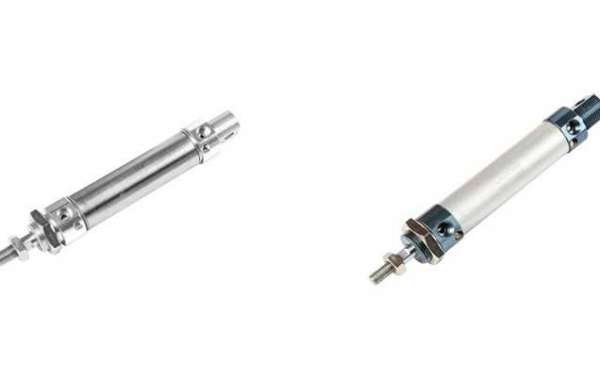Pneumatic Standard Cylinder are the most accepted solution to create force and motion in OEM applications. The reasons for this is that they are simple in design, easy to install, economical in price, and durable in performance. Pneumatic cylinders are designed in a variety of sizes, styles, and configurations. OEMs need to choose the pneumatic cylinder carefully, so that it will support the application well. The easiest way to achieve this is to keep a few guidelines in mind.
Style
The first distinction when choosing pneumatic cylinder design is whether to select rodless or piston rod actuation. In a single-action rod type, compressed air entering through a port at one end of the cylinder moves the piston rod, with one stroke moving the load and an exhaust port that lets the air out. How fast the rod moves depends on how fast the air is exhausted. Double-acting cylinders drive the rod back again as well, allowing a push-pull load motion, while single-acting cylinders use a return spring.
Rod-style cylinders can be broken down yet further into different types:
Compact, for smaller spaces and short-stroke operation. Mostly single-acting.
Repairable, for rugged duties and longer life
Disposable, for lighter-duty operations and no repair potential
Guided, for controlled, precise linear motion and high side loads
Rack-and-pinion, to convert linear motion into angular rotation
Rodless cylinders can be a bellows type, with a single-acting inflatable elastomer tube that creates high force and bends in any direction; or linear sliders, with a carriage-mounted or cable-and-pulley load. There are also magnetically coupled actuators and guided linear slides. Rodless Pneumatic cylinders are ideal for high moment loads or applications requiring a long stroke, and save space by containing the stroke action within the overall envelope.
Load and speed
The load is the primary consideration when determining cylinder type and piston size. The piston area (force factor) multiplied by the air pressure in the cylinder gives the available force. A general rule is to select a force factor that will produce a force 25% greater than the load to help compensate for friction and losses. Pneumatic systems are quite forgiving in terms of oversizing, but using components that are too big adds unnecessary expenses in terms of both purchase price and energy consumption.
The bore size (force factor) determines force at a given pressure. The operating pressure, which in a plant can typically range from range from 10 to 150 psi, is the first consideration when selecting a bore size.
The next step in choosing the bore size is the amount of force that the application requires. Suppliers often provide charts to assist with calculating bore size. If the bore diameter is between sizes, fluid-power experts recommend rounding up to the next size.
It’s also important to remember the bore diameter squares the thrust delivered. For example, a two-inch diameter cylinder has four times the power of a one-inch diameter unit. Therefore, doubling the bore quadruples the thrust.
The cylinder stroke
What stroke do you need? Pulling a load might require a 15-ft stroke if you’re closing the door to a large oven. Lifting a stop gate on a conveyor could require only a 2-in. motion, whereas pushing a load off of the conveyor might require 30 in. or more. Staking a rivet wouldn’t require much stroke at all—most likely only a fraction of an inch.
Whatever your task, knowing the stroke starts to define the type of cylinder you’ll need and the envelope size required for mounting it. For purposes of discussion here we classify and show examples of four cylinder types by stroke as follows: (a) short stroke, (b) intermediate stroke, (c) long stroke, and (d) specialty stroke cylinders. Note that some cylinders may overlap all of the categories.
Mounting considerations
You probably know how you plan to mount the unit. But often times, you find that mounting will require a special bolt pattern or mounting style that is non-standard. You’ll have to ask how the style of cylinder you have selected can be modified to fit the pattern for a minimum cost. Will it require that special parts be manufactured? Will it need unique mounting hardware, such as plates, flanges or brackets?
In cases where the mount is built into or uniquely attached to your cylinder, costs will increase along with manufacturing lead times.
As an example, nose mounting might require that unique end caps be produced. Integral lug mounts could require special extrusions, welding or other creative attachment concept to be employed. In lieu of lugs, is there room to drill and tap your cylinder’s end caps (or body) with special bottom or side mounting holes? Would you have enough depth of thread?
That's all information, if you want to know more information please visit the professional Pneumatic Cylinder manufacturer https://www.nblida.com/product/actuators/







